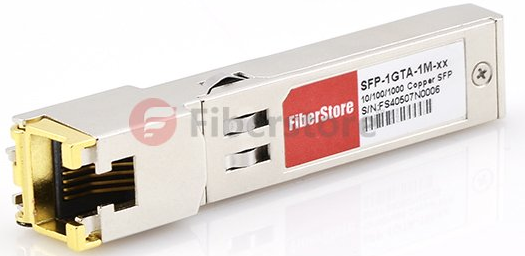Gigabit Ethernet has been regarded as a huge breakthrough of telecom industry by offering speeds of up to 100Mbps. Gigabit Ethernet is a standard for transmitting Ethernet frames at a rate of a gigabit per second. There are five physical layer standards for Gigabit Ethernet using optical fiber (1000BASE-X), twisted pair cable (1000BASE-T), or shielded balanced copper cable (1000BASE-CX). 1000BASE-LX and 1000BASE-SX SFP are two common types of optical transceiver modules in the market. Today’s topic will be a brief introduction to 1000BASE-LX and 1000BASE-SX SFP transceivers.
1000BASE in these terms refers to a Gigabit Ethernet connection that uses the unfiltered cable for transmission. “X” means 4B/5B block coding for Fast Ethernet or 8B/10B block coding for Gigabit Ethernet. “L” means long-range single- or multi-mode optical cable (100 m to 10 km). “S” means short-range multi-mode optical cable (less than 100 m).
1000BASE-SX
1000BASE-SX is a fiber optic Gigabit Ethernet standard for operation over multi-mode fiber using a 770 to 860 nanometer, near infrared (NIR) light wavelength. The standard specifies a distance capability between 220 meters and 550 meters. In practice, with good quality fiber, optics, and terminations, 1000BASE-SX will usually work over significantly longer distances. This standard is highly popular for intra-building links in large office buildings, co-location facilities and carrier neutral internet exchanges. 1000BASE-SX SFP works at 850nm wavelength and used only for the purposed of the multimode optical fiber with an LC connector. 1000BASE-SX SFP traditional 50 microns of multimode optical fiber link is 550 meters high and 62.5 micron fiber distributed data interface (FDDI) multimode optical fiber is up to 220 meters. Take EX-SFP-1GE-SX as an example, this SX fiber transceiver supports DOM function and the maximum distance of the SX SFP is 550 m. The 1000Base-SX standard supports the multimode fiber distances shown in table 1.
1000BASE-LX
Specified in IEEE 802.3 Clause 38, 1000BASE-LX is a type of standard for implementing Gigabit Ethernet networks. The “LX” in 1000BASE-LX stands for long wavelength, indicating that this version of Gigabit Ethernet is intended for use with long-wavelength transmissions (1270–1355 nm) over long cable runs of fiber optic cabling. 1000BASE-LX can run over both single mode fiber and multimode fiber with a distance of up to 5 km and 550 m, respectively. For link distances greater than 300 m, the use of a special launch conditioning patch cord may be required. 1000BASE-LX is intended mainly for connecting high-speed hubs, Ethernet switches, and routers together in different wiring closets or buildings using long cabling runs, and developed to support longer-length multimode building fiber backbones and single-mode campus backbones. E1MG-LX-OM is Brocade 1000BASE-LX SFP, this LX single-mode transceiver operates over a wavelength of 1310nm for 10 km.
Difference Between LX, LH and LX/LH
Many vendors use both LH and LX/LH for certain SFP modules, this SFP type is similar with the other SFPs in basic working principle and size. However, LH and LX/LH aren’t a Gigabit Ethernet standard and are compatible with 1000BASE-LX standard. 1000BASE-LH SFP operates a distance up to 70km over single-mode fiber. For example, Cisco MGBLH1 1000BASE-LH SFP covers a link length of 40km that make itself perfect for long-reach application. 1000BASE-LX/LH SFP can operate on standard single-mode fiber-optic link spans of up to 10 km and up to 550 m on any multimode fibers. In addition, when used over legacy multimode fiber type, the transmitter should be coupled through a mode conditioning patch cable.
Conclusion
1000BASE SFP transceiver is the most commonly used component for Gigabit Ethernet application. With so many types available in the market, careful notice should be given to the range of differences, both in distance and price of multimode and single-mode fiber optics. Fiberstore offers a large amount of in-stock 1000BASE SFP transceivers which are compatible for Cisco, Juniper, Dell, Finisar, Brocade, or Netgear in various options. If you have any requirement of our products, please send your request to us.
Related Article: Can We Interconnect SFP, SFP+, XFP, X2 and XENPAK?
Related Article: How Many Types of SFP Transceivers Do You Know



